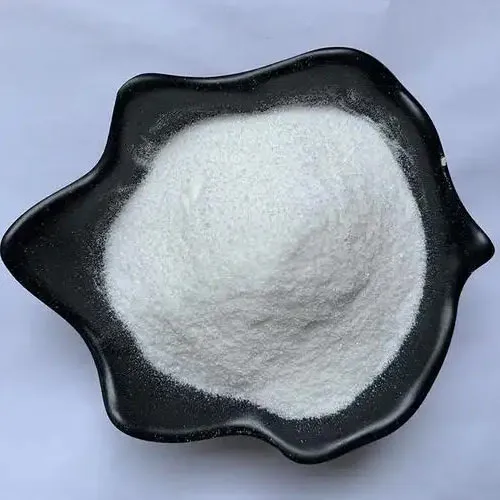
High Substituted Hydroxypropyl Cellulose - Binder & Coating
High‑substituted HPC, decoded by someone who’s toured the plants
If you work in pharma coatings, specialty inks, or even hot-melt extrusion, you’ve probably bumped into High Substituted Hydroxypropyl Cellulose at some point. It’s the quiet multitasker—water-soluble, thermoplastic, and surprisingly forgiving in complex formulas. I’ve visited producers from Hebei to Hamburg; to be honest, the best grades feel consistent, easy to disperse, and drama-free during scale-up. That’s rarer than it should be.

What it is and why it matters
Chemically, it’s cellulose etherified with hydroxypropyl groups (high substitution level boosts solubility and organo-compatibility). In practice, High Substituted Hydroxypropyl Cellulose gives you clean films, salt tolerance, and an LCST-type thermal gelation that formulators quietly love—especially for controlled release or thickening that responds to temperature. Many customers say it simply “behaves,” and I’d agree.
Typical product specs (real-world use may vary)
| Parameter | Typical value (≈) | Test reference |
|---|---|---|
| Hydroxypropoxy content | 65–75% | USP–NF / Ph. Eur. monographs |
| Molar substitution (MS) | ≈3.5–4.0 | Supplier method |
| Viscosity (2% aq., 20°C) | 300–4000 mPa·s (grades) | ASTM D2196 (Brookfield) |
| Moisture | ≤5% | USP <921>/Karl Fischer |
| Residue on ignition/ash | ≤0.5% | USP–NF |
| Particle size | 80–200 mesh options | Laser diffraction/Sieve |
Process flow, briefly
- Materials: purified cellulose pulp, propylene oxide, alkali catalyst, deionized water.
- Etherification: controlled pressure/temperature reactor to reach target substitution.
- Neutralization → washing → solvent/water recovery (closed-loop preferred).
- Drying, milling, sieving; anti-caking step if needed.
- QC: ID (IR/NMR), hydroxypropoxy %, viscosity (ASTM D2196), moisture, ash, heavy metals per pharmacopeia.
Service life: around 24 months in sealed bags at 10–30°C, RH <65%. Origin for this product line: Room 2308, Dongsheng Plaza 2, No. 508 Zhongshan East Road, Chang’an District, Shijiazhuang, Hebei, China.

Where it’s used (and why)
- Pharmaceuticals: film coating, binder for direct compression, taste masking, hot-melt extrusion matrices.
- Personal care: clear gels, styling products, alcohol-based sprays (good solvent tolerance).
- Inks & coatings: leveling aid, rheology control in water/solvent systems; inkjet stability.
- Ceramics and construction additives: green strength, workability in specialty grouts/adhesives.
Feedback I hear a lot: “clean dissolution, low fisheyes,” and “predictable viscosity,” which—if you’ve ever fought clumps—sounds almost luxurious.
Vendor snapshot (indicative)
| Factor | Tangzhi (Hebei) | Global Brand A | Local Trader |
|---|---|---|---|
| Compliance | USP/EP alignment, ISO 9001 | USP/EP, global DMFs | Varies |
| Viscosity grades | Broad, custom on request | Broad | Limited |
| Lot-to-lot consistency | Strong (my experience) | Excellent | Inconsistent |
| Lead time | Competitive | Moderate | Fast (stock-dependent) |
| Technical support | Formulation help, COAs | Extensive global | Limited |
Customization & validation
Options include particle size (80–200 mesh), viscosity targets, substitution window, moisture spec, and packaging. For regulated uses, look for ISO 9001, GMP excipient practices (IPEC-PQG), and COA/COC traceability. Labs operating to ISO/IEC 17025 add confidence. Test packs and scale-up support are worth asking for.
Quick case notes
- OD-tablet coating: swapping in High Substituted Hydroxypropyl Cellulose cut tack and improved gloss at lower solids—line speed went up ≈12%.
- Waterborne wood coating: better leveling with 0.2% addition; orange peel visibly reduced, same open time.
- HME matrix: grade with ≈1500 mPa·s balanced processing torque and release over 12 h without plasticizer change.
Industry trend? Blends. I’m seeing HPC paired with HPMC or PVA to tune film softness and moisture barrier. Also, cleaner solvent recovery loops are becoming the default—good for cost and compliance.
Citations
-
Reliable Powdered Cellulose Supplier: Quality, Sustainability & InnovationNewsNov.24,2025
-
Find Trusted Microfibrillated Cellulose Suppliers for Sustainable Industrial SolutionsNewsNov.24,2025
-
Leading Methocel Suppliers: Quality, Innovation & Sustainability in Methylcellulose SupplyNewsNov.23,2025
-
Reliable Hydroxyethylcellulose Suppliers for Industry & Sustainability | Tangzhi HPMCNewsNov.23,2025
-
Top Ethyl Cellulose Supplier – Quality, Sustainability, and Industrial SupportNewsNov.23,2025
-
Trusted CMC Powder Suppliers for Food, Pharma & Industrial Use | Tangzhi HPMCNewsNov.22,2025





















